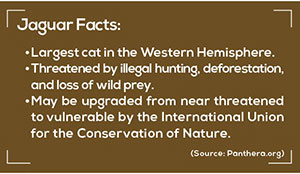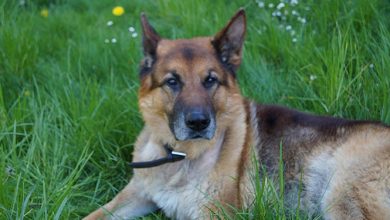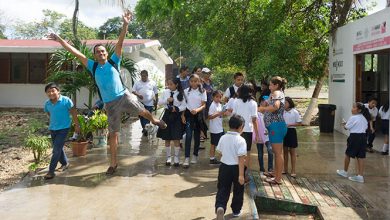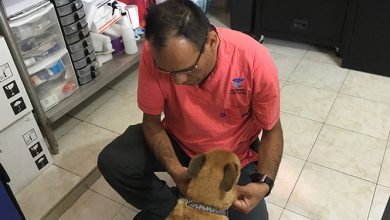Panthera’s Jaguar Corridor Initiative
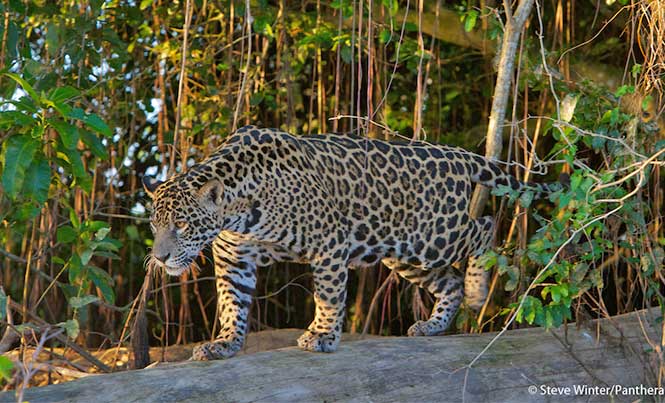
The ambitious project sets to do what no other conservation program has done to date – protect jaguars across 11 countries from Mexico to Argentina
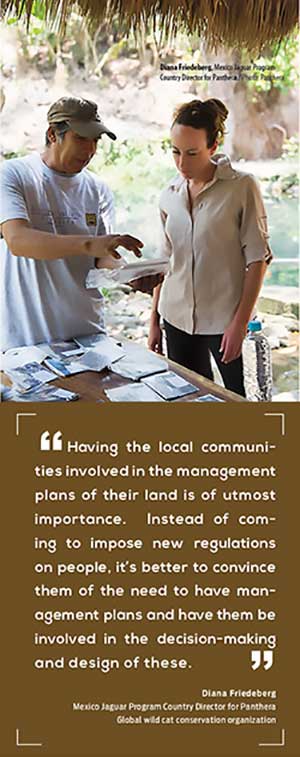 From the tigers of Asia to the lions of Africa, wild cats are at risk across the globe. In the Americas, jaguars have been eradicated from over 40% of their historic range. As development of historic jaguar ranges continues from the southwest of the United States to South America, jaguars are losing habitat and are being fragmented into smaller areas. This fragmentation compromises their genetic integrity, reduces the availability of wild prey, and places them in danger of human-jaguar conflict. Panthera, the global wild cat conservation organization, has an ambitious project to help piece together a corridor for jaguars that will span from Mexico to Argentina.
From the tigers of Asia to the lions of Africa, wild cats are at risk across the globe. In the Americas, jaguars have been eradicated from over 40% of their historic range. As development of historic jaguar ranges continues from the southwest of the United States to South America, jaguars are losing habitat and are being fragmented into smaller areas. This fragmentation compromises their genetic integrity, reduces the availability of wild prey, and places them in danger of human-jaguar conflict. Panthera, the global wild cat conservation organization, has an ambitious project to help piece together a corridor for jaguars that will span from Mexico to Argentina.
Led by their CEO, Dr. Alan Rabinowitz and Jaguar Program Executive Director and Puma Program Director, Dr. Howard Quigley, Panthera’s leading jaguar scientists are working on the Jaguar Corridor Initiative. The team will spend four years, traveling two continents and 11 countries on foot, horseback, boat, helicopter, and car from Mexico to Argentina. The goal is to determine the current state of jaguar habitats and populations in the corridor, and which areas are considered most in need of conservation.
I learned of Panthera´s first expedition to Mexico via social media when I saw photos from their exploration of Laguna de Terminos Natural Protected Area and the Terminos-Calakmul Corridor. Both of these protected areas are located in the state of Campeche, just a few hours from Playa del Carmen. I reached out to Panthera to find out more and was put in touch with Diana Friedeberg, Mexico Jaguar Program Country Director for Panthera who was kind enough to answer a few questions for us:
- What is the role of the jaguar in the ecosystem, and why should it be protected?
Jaguars are of utmost importance for the ecosystems they inhabit. They are an apex predator; this means that by protecting jaguars, we are also indirectly protecting many other species that form part of the community in their habitat. Jaguars play a fundamental ecological role because they moderate numerous food chains. Where jaguars thrive, their presence is an indicator of an ecosystem’s good health, as it shows that populations of their prey are stable, as well as the vegetation that their prey consumes.
- Why is establishing a corridor vital to jaguar survival?
Jaguars require large areas of land to survive; males establish large home ranges with little or no overlap and must be able to breed and hunt in this area. As human development encroaches on jaguar habitats, human-jaguar conflict increases and jaguars often disperse in search of new territory. As populations are fragmented or separated—and with no established or protected corridors through which to travel elsewhere—they become isolated, leading to inbreeding and jeopardizing the long-term survival of the species.
- Why is including the Yucatan Peninsula as part of the Jaguar Corridor Initiative important?
The Yucatan is immensely important for jaguar conservation as several core populations live here but are in grave danger of becoming isolated. We must dedicate great conservation efforts to connecting these populations to each other and other jaguars outside the peninsula through biological corridors.
The Yucatan is also very important for jaguar conservation in Mexico because it connects our populations to those in Central America, increasing the diversity of their genetic pool, which enhances their fitness and greatly strengthens their chances of survival. The Yucatan provides the link between the northernmost populations in Mexico (Sonora, Jalisco, Tamaulipas, SLP, etc.) and those in Central and South America; if this link is severed the populations would become severely isolated.
- How has development in the region impacted the jaguars?
Development in the peninsula has caused habitat fragmentation, a decrease in the jaguar’s natural prey (by overhunting led by people or loss of habitat) and has forced jaguars and humans to live in closer and closer contact, fueling human-jaguar conflict and livestock depredation together.
Panthera in no way opposes human development – we understand its need and how important it is for local communities to be able to benefit economically from their lands. What we strive for is finding ways in which human development can go hand in hand with conservation; we look for options in which local communities and companies may prosper, while at the same time protecting wildlife. For example, one of our current projects carried out by a collaborator and Ph.D. student at the UJAT, Alberto Gonzalez Gallina, consists of identifying whether jaguars and other wildlife are using different types of underpasses along major highways in the peninsula. Results, though preliminary, show that animals are in fact using these underpasses to cross busy roads. This suggests that corridors in the peninsula, even those traversing busy roads, are viable and an example of how development (in this case, roads) can work alongside conservation. Humans can have the benefits of highways while the impact on wildlife is mitigated by creating underpasses, so their natural dispersion isn’t completely impeded.
- What kind of reception have you had when meeting with local communities and livestock ranchers?
It varies. Many people already have conservation ideas of their own. They feel the need to protect their land and understand 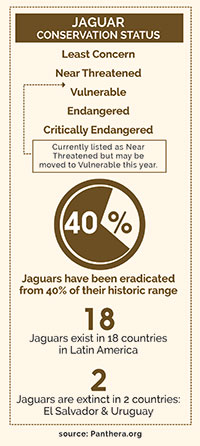 that natural resources are finite. These people often just need a little guidance and support from NGOs like us and the government. Other groups, often cattle ranchers, are very set in their ways. They do not see the need to change the traditional way they have done cattle ranching in the past (and the methods their own parents taught them), which is unsustainable. Here it is necessary to first try to change their attitudes and explain the importance of conservation for the future of Mexico. This tends to be a long process – in order for people to be truly convinced, often they need to see the benefits firsthand. What Panthera does is establish model ranches, where we implement predation mitigation strategies, and then other ranchers can come visit these ranches and see how sometimes very simple changes in livestock husbandry techniques can greatly reduce predation. These model cattle ranchers are sort of ambassadors that can tell their neighbors and communities how well these methods work.
that natural resources are finite. These people often just need a little guidance and support from NGOs like us and the government. Other groups, often cattle ranchers, are very set in their ways. They do not see the need to change the traditional way they have done cattle ranching in the past (and the methods their own parents taught them), which is unsustainable. Here it is necessary to first try to change their attitudes and explain the importance of conservation for the future of Mexico. This tends to be a long process – in order for people to be truly convinced, often they need to see the benefits firsthand. What Panthera does is establish model ranches, where we implement predation mitigation strategies, and then other ranchers can come visit these ranches and see how sometimes very simple changes in livestock husbandry techniques can greatly reduce predation. These model cattle ranchers are sort of ambassadors that can tell their neighbors and communities how well these methods work.
- Can you discuss the importance of getting the support of the local population when attempting to create conservation management plans?
Having the local communities involved in the management plans of their land is of utmost importance. Instead of coming to impose new regulations on people, it’s better to convince them of the need to have management plans and have them be involved in the decision-making and design of these. We want them to become conservationists, empowered by knowledge, tools, and support. If they truly understand the importance of conservation, not only for the flora and fauna of Mexico, but for themselves and their families as well, the conservation projects (including management plans) will be much more successful.
- Could you explain how you might convince a rancher not to kill jaguars that are a threat or perceived threat to his livestock?
First, the leading causes of cattle loss include snake bites, sickness, and death during labor, among other reasons unrelated to jaguars. Cattle predation by carnivores is not the main cause of mortality in cattle, and even within cattle predation, jaguars are not always the culprits: many times pumas or feral dogs are to blame. Setting this story straight and changing the minds and attitudes of Mexico’s people towards jaguars is the first step.
Predation by jaguars does, in some cases, take place and when this occurs, our team looks to educate and help ranchers implement some of the predation mitigation techniques Panthera has developed over the years. Our cattle conflict expert Dr. Rafael Hoogesteijn and Dr. Amira Hoogesteijn have developed very successful techniques in their 25 years of experience, and we have proven their efficiency in countries like Brazil, Costa Rica, Belize, and Colombia.
If cattle ranchers understand the ecological importance of jaguars and benefit from their presence in some way, then they surely will be less likely to hunt the species. Ecotourism is an example of how this can be done. Due to a highly successful jaguar conservation program and the banning of jaguar hunting with hounds, we’ve established an ecotourism operation in the Brazilian Pantanal. Here, tourists pay a great amount to get the opportunity to see jaguars in their natural habitat, and thousands of other animals and plants that thrive in the Pantanal wetland, thanks to the survival of the jaguar. The local community benefits from this ecotourism operation, as they can gain employment as tour guides, establish local businesses and more.
If you are interested in learning more about Panthera, their Jaguar Corridor Initiative, or their other wild cat conservation projects, please visit www.panthera.org.mx. You can also follow them on Facebook/pantheramexico, Instagram/pantheramexico, and Twitter/pantheramexico. Please consider a donation to support their programs – every bit helps!
Diana reminds all of us to be conscious! Educate yourself and others on the importance of jaguar conservation and promote a general ‘green culture’.



